
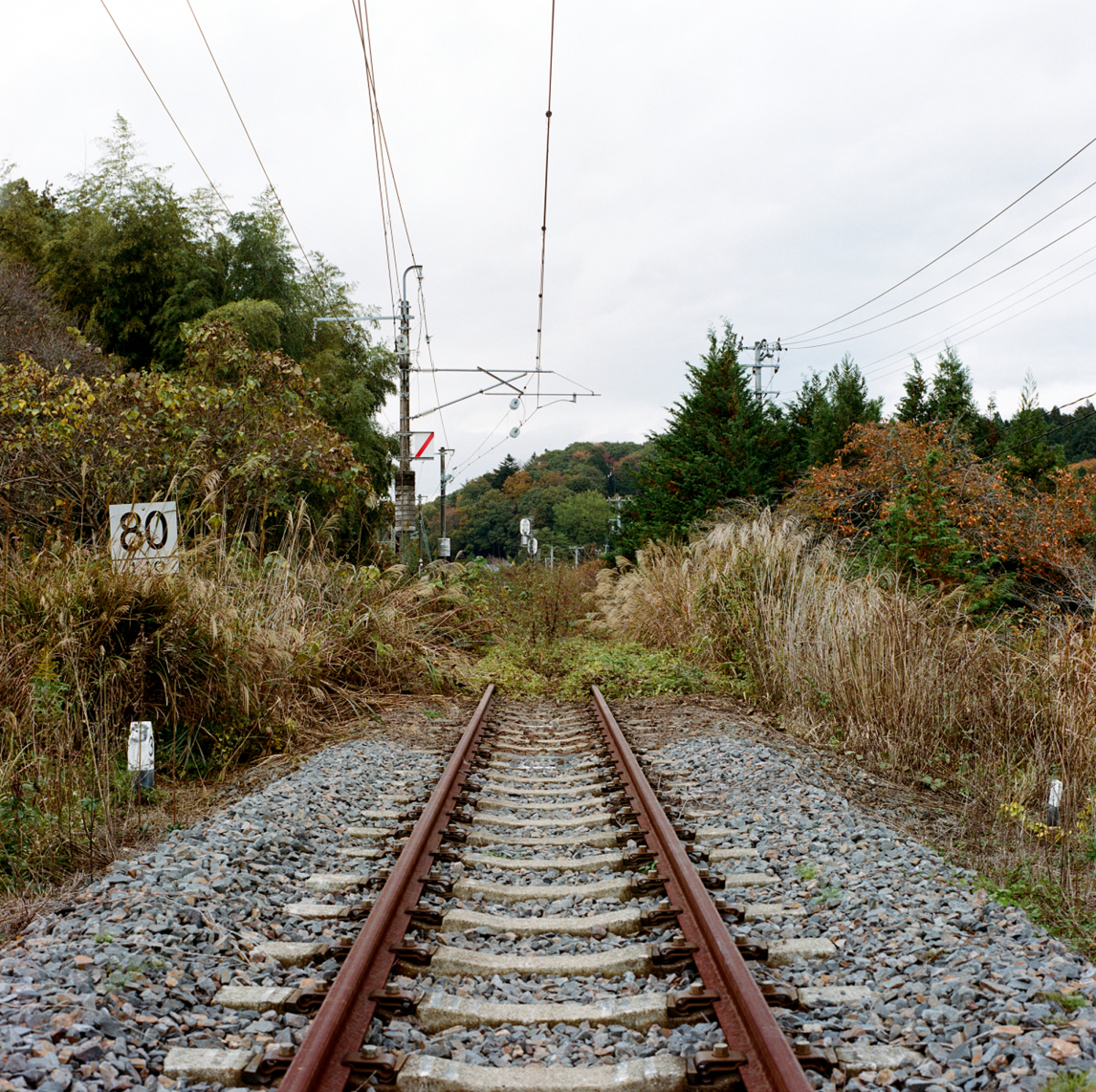
Further north to Naraha, the Joban train line used to run until Minamisoma; but as its route pass through a still too contaminated zone, the line presently ends quite abruptly in the bushes at the edge of town.
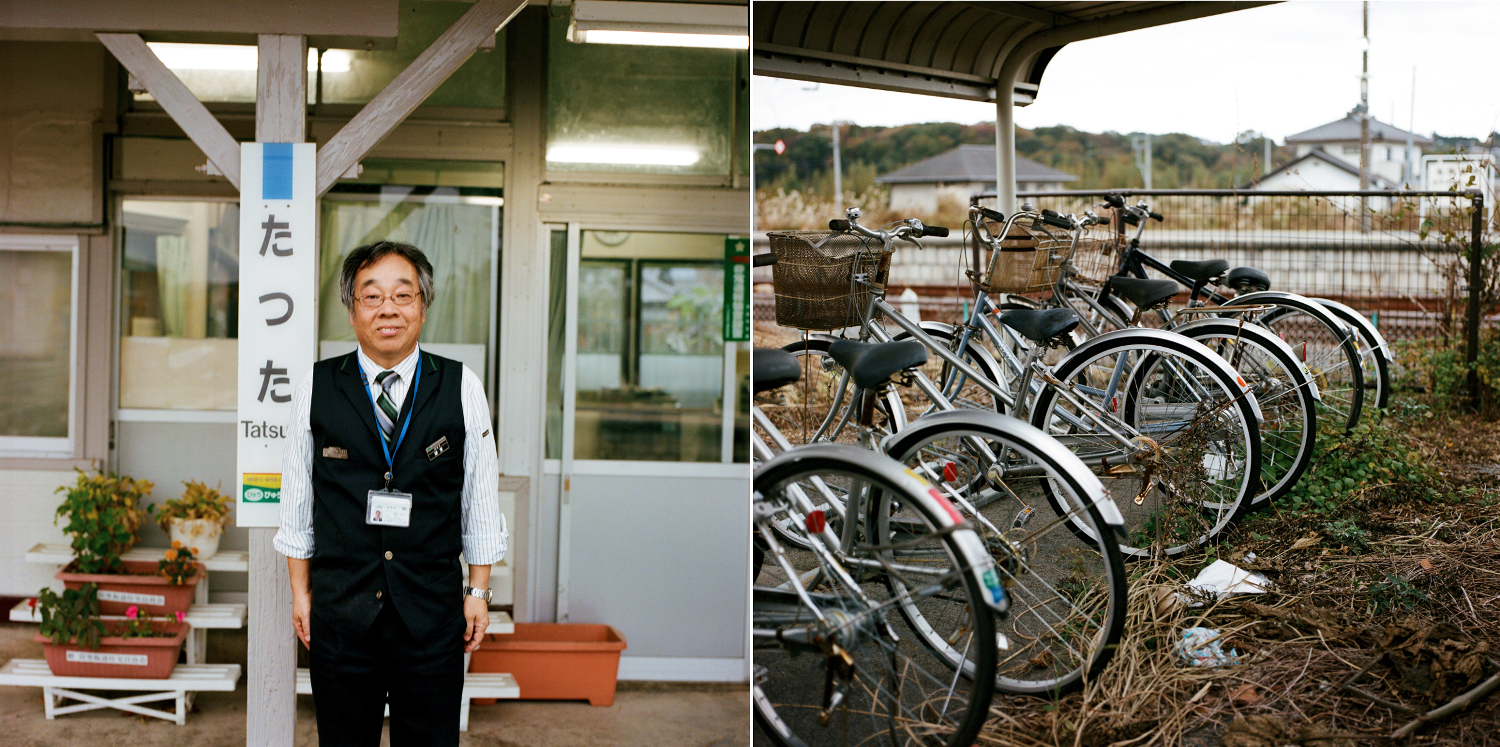
Kamakura Mori works at the Naraha Tatsuta Station. He comes from Iwaki but is very committed to the revival of Naraha. He proudly shows me the many flowers that he has planted in and around the station. Right, about twenty bicycles abandoned in the parking lot of the Tatsuta station are gradually surrounded by brambles. Like everywhere in Japan, these bikes have no padlocks as theft is rare.

Nature takes its course in many parts of the city. Persimmons, fruits for which Fukushima was very famous, have a substantial presence in the village. They cover the tree to the left.
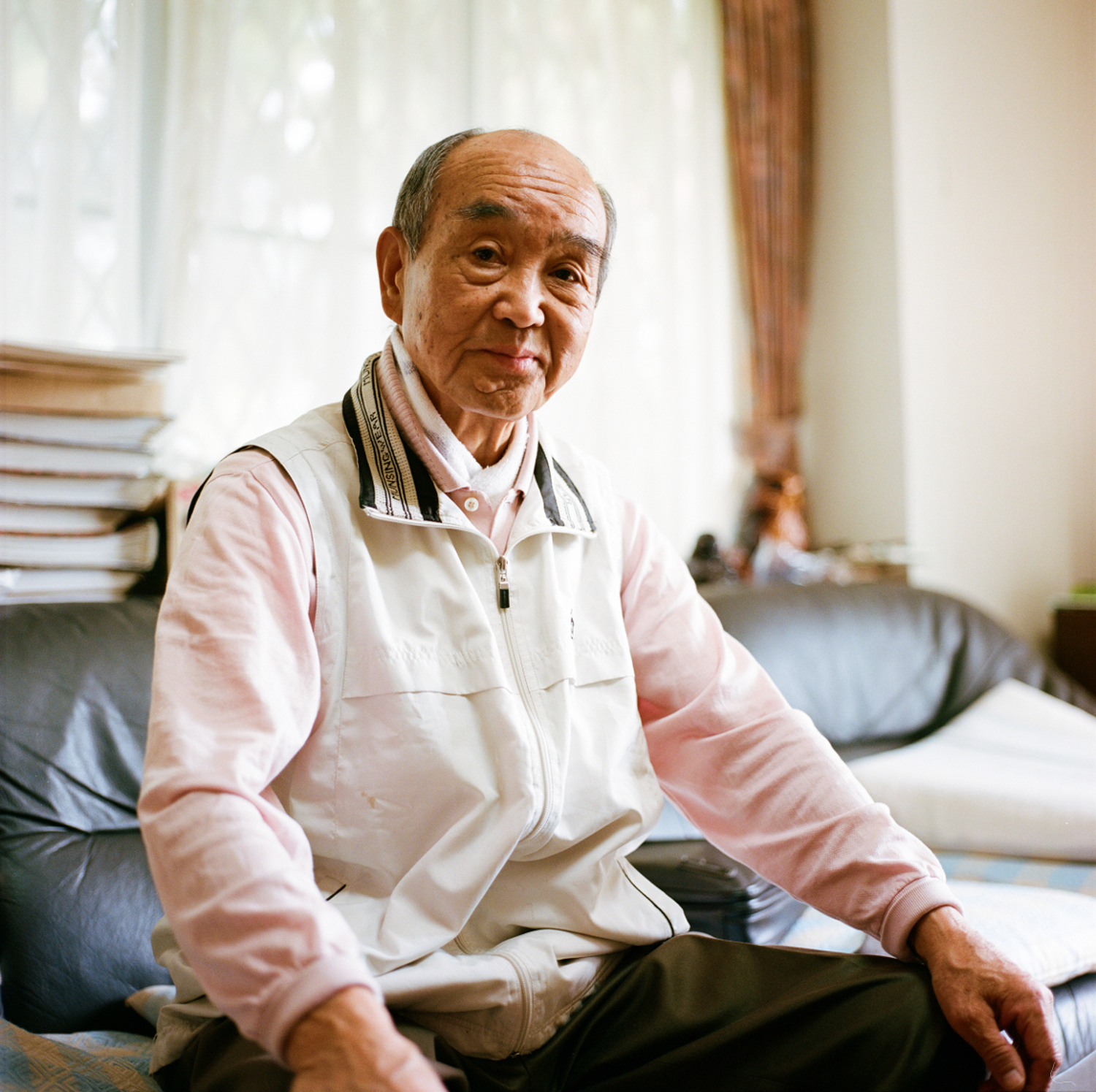
This man is Japanese but was born in China in 1928. He returned to Japan with his family after the Second World War. He is presently preparing to return to Naraha in the coming weeks, with his spouse. They are now fixing their home, damaged by humidity over the last four years. Since the disaster, he has lived with his spouse in temporary housing. He had surgery due to lung cancer two years ago.
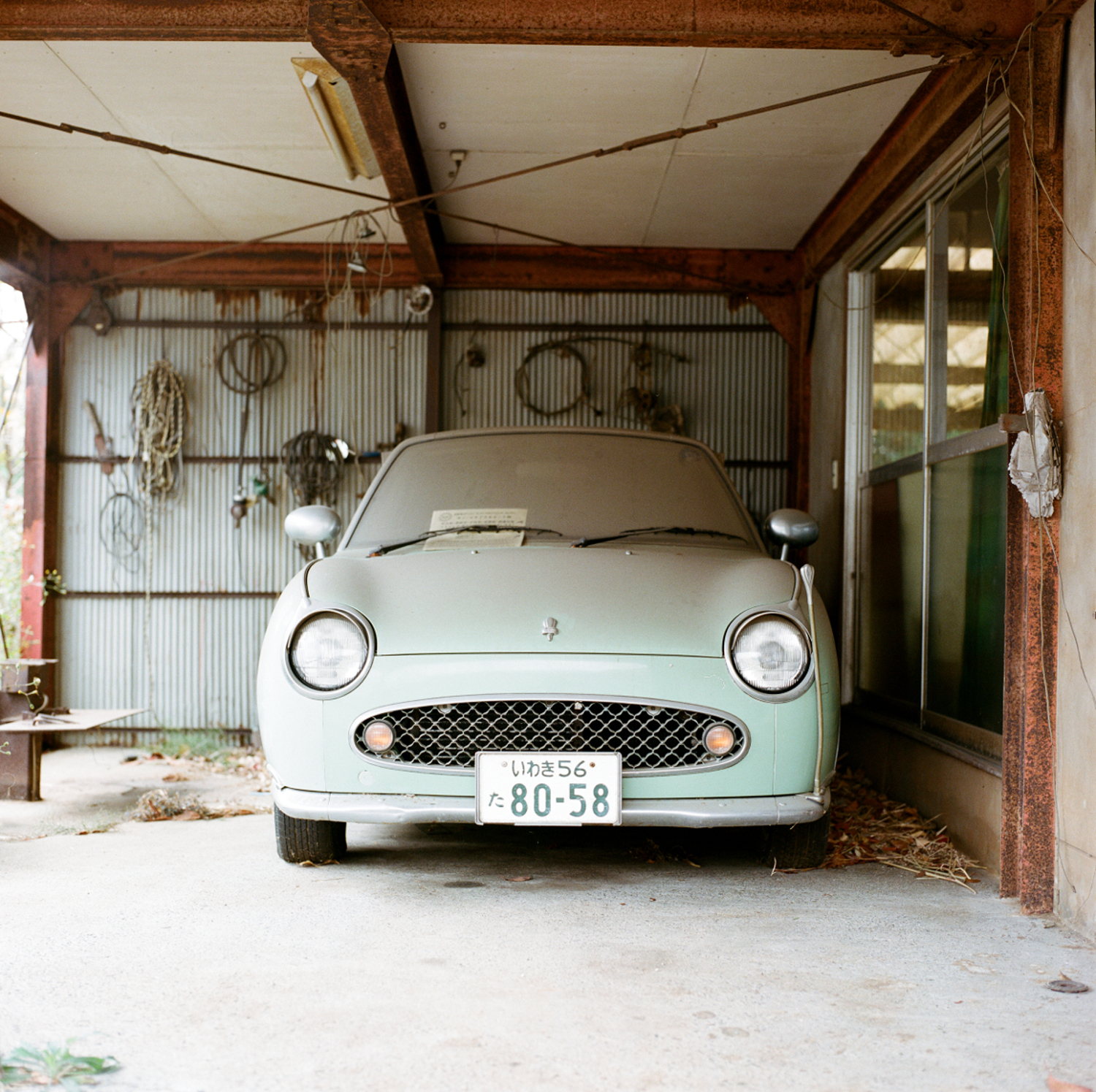
A Nissan Figaro (vintage car, build at 20000 ex. in the late 1980s) gathers dust for over four years and awaits the return of its owner.
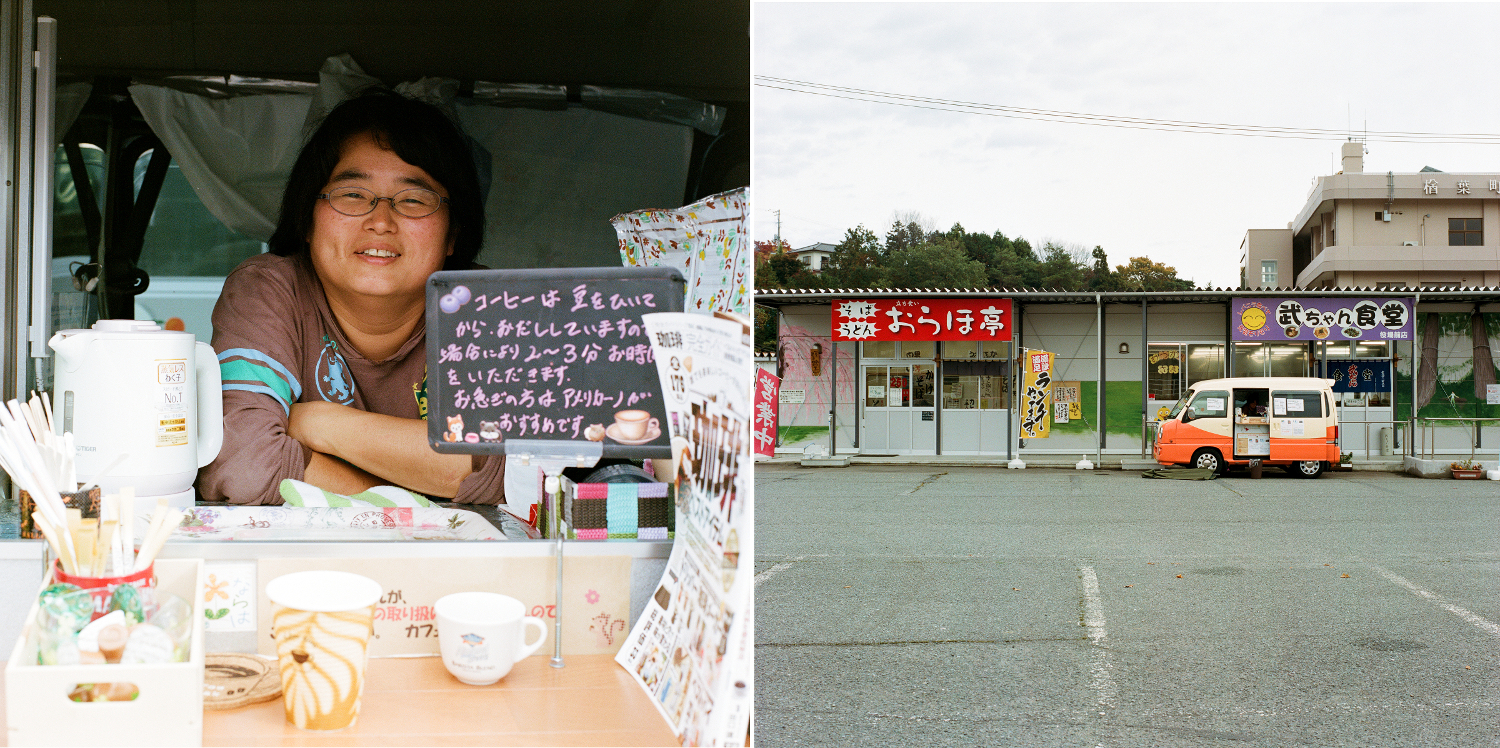
Since April of 2015, Yukiko Takano has returned to work in her small coffee-truck. Her customers are mainly labourers for construction and demolition companies, companies with a strong presence in the city. Her mother still lives in temporary housing while waiting for her house to be repaired. Tanako often parks her truck in front of the two temporary restaurants set up by the city (in the back). A portion of the employees of these two restaurants are foreigners (Chinese) hired by the city.
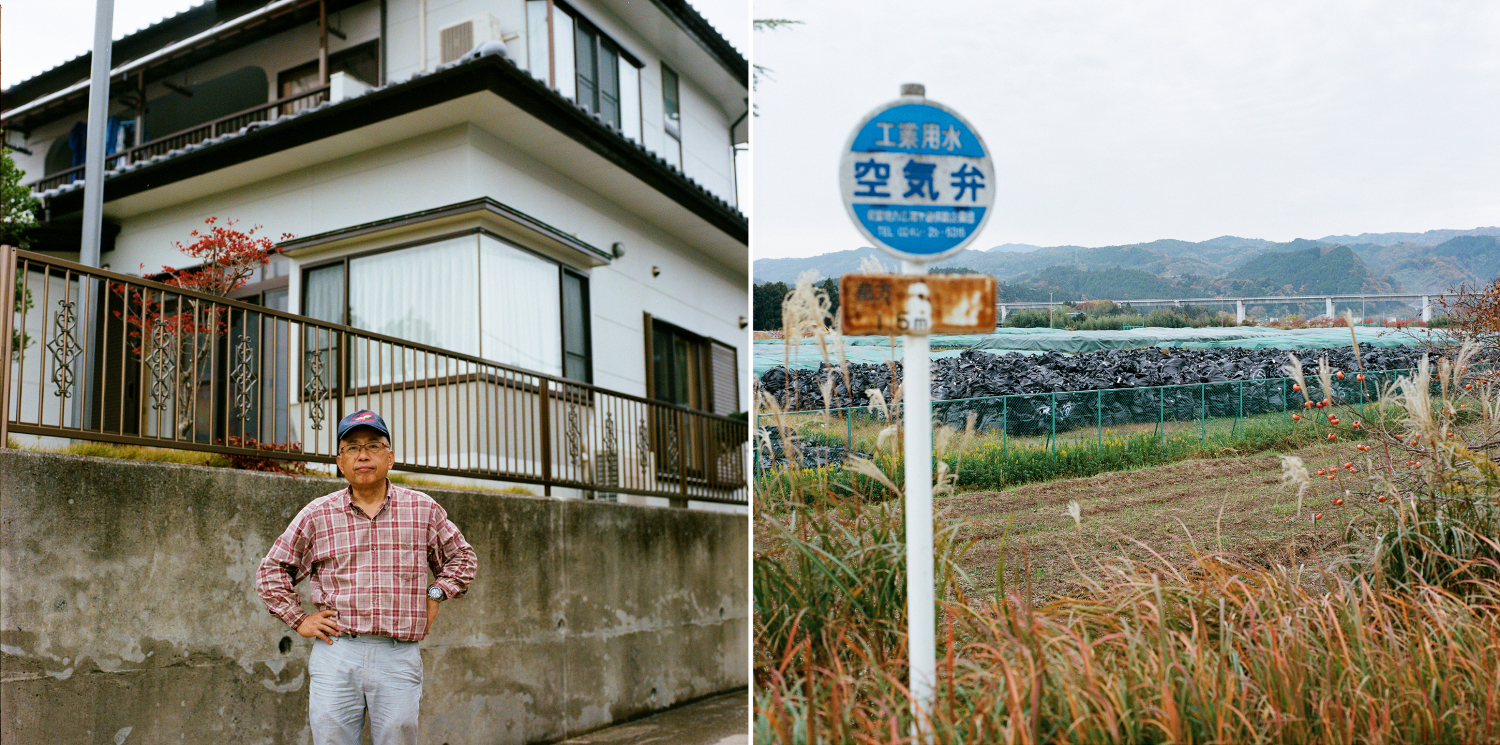
This man is a city councillor in Naraha. Stored in front of his house are thousands of slightly radioactive sandbags, the fruit of decontamination operations. He tells me that the radioactivity is well monitored by the state and therefore, he is not at all worried.
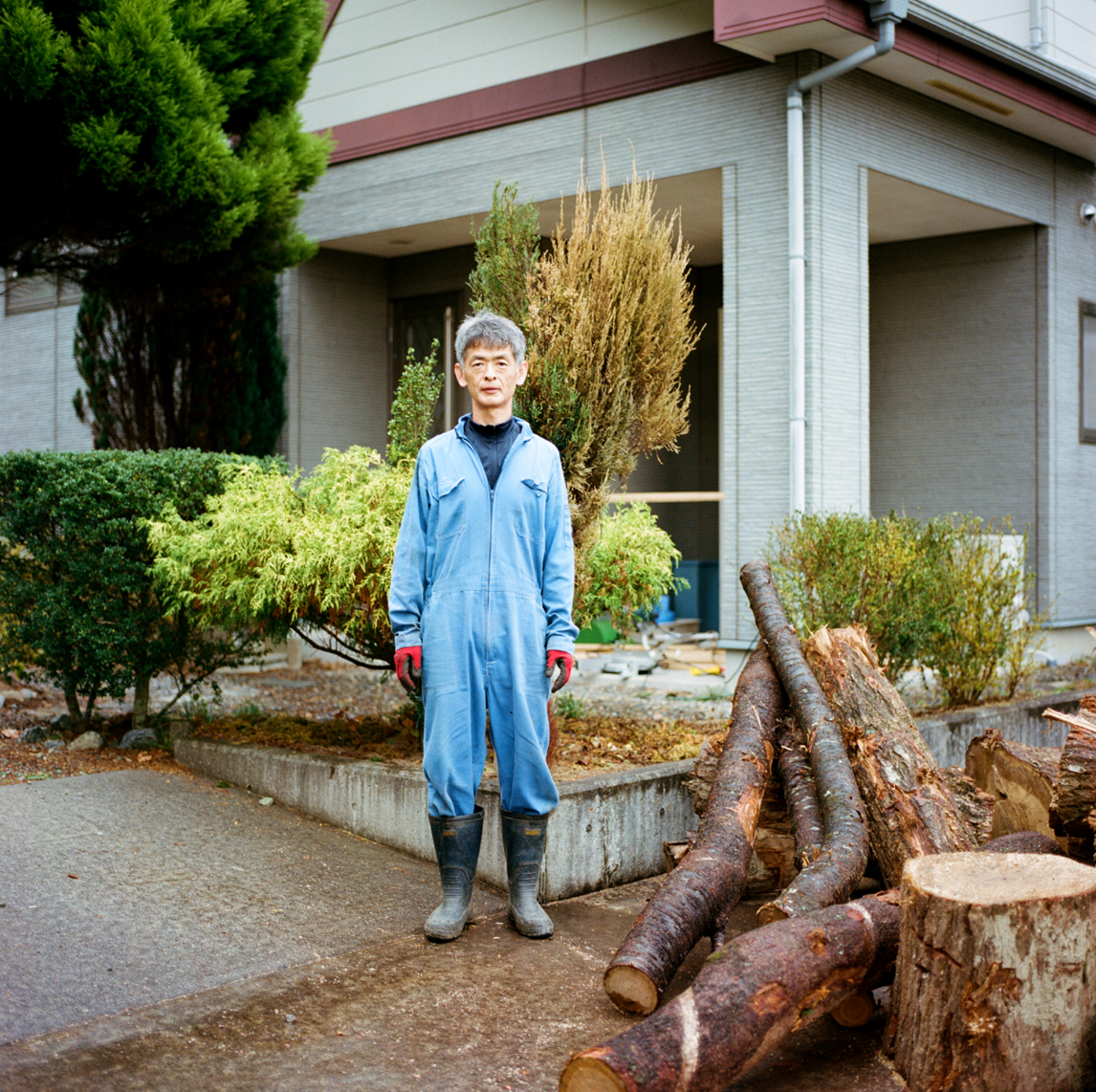
This man works at the Fukushima Daini plant, a few kilometers north of Nahara, at the boundary of the current evacuation zone. The plant bore less of the brunt of the tsunami than the one at Fukushima Daichi, but nevertheless remains shut down. He wishes to go back to living in his own house, as do his wife and children. But they still have to discuss their actual return date. He tells me that the government came to decontaminate his house just by washing the walls and roof. The logs next to him are for his fireplace. He just repaired his bathroom and occasionally stays at his place on weekends.
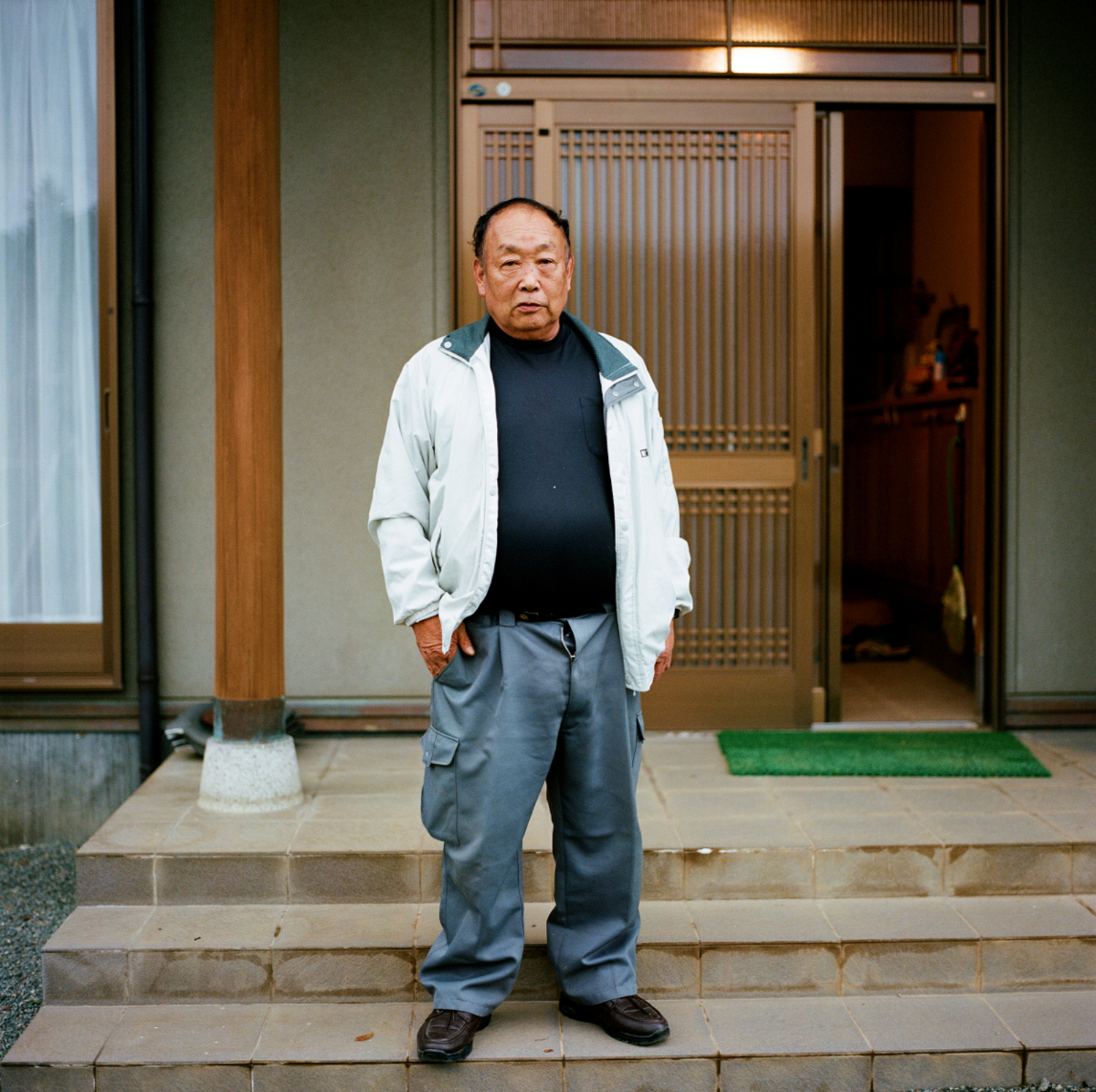
This man was born in Naraha and he is among those who had requested permission to return to live at home in the summer of 2014. He told me that had I come a bit earlier to see him, he would have invited me to dinner to sample the fish he caught in the river below his house. He also keeps a garden, and his vegetables are monitored by the municipality. The government came to decontaminate his house, but he preferred to redo it, a second time, himself.
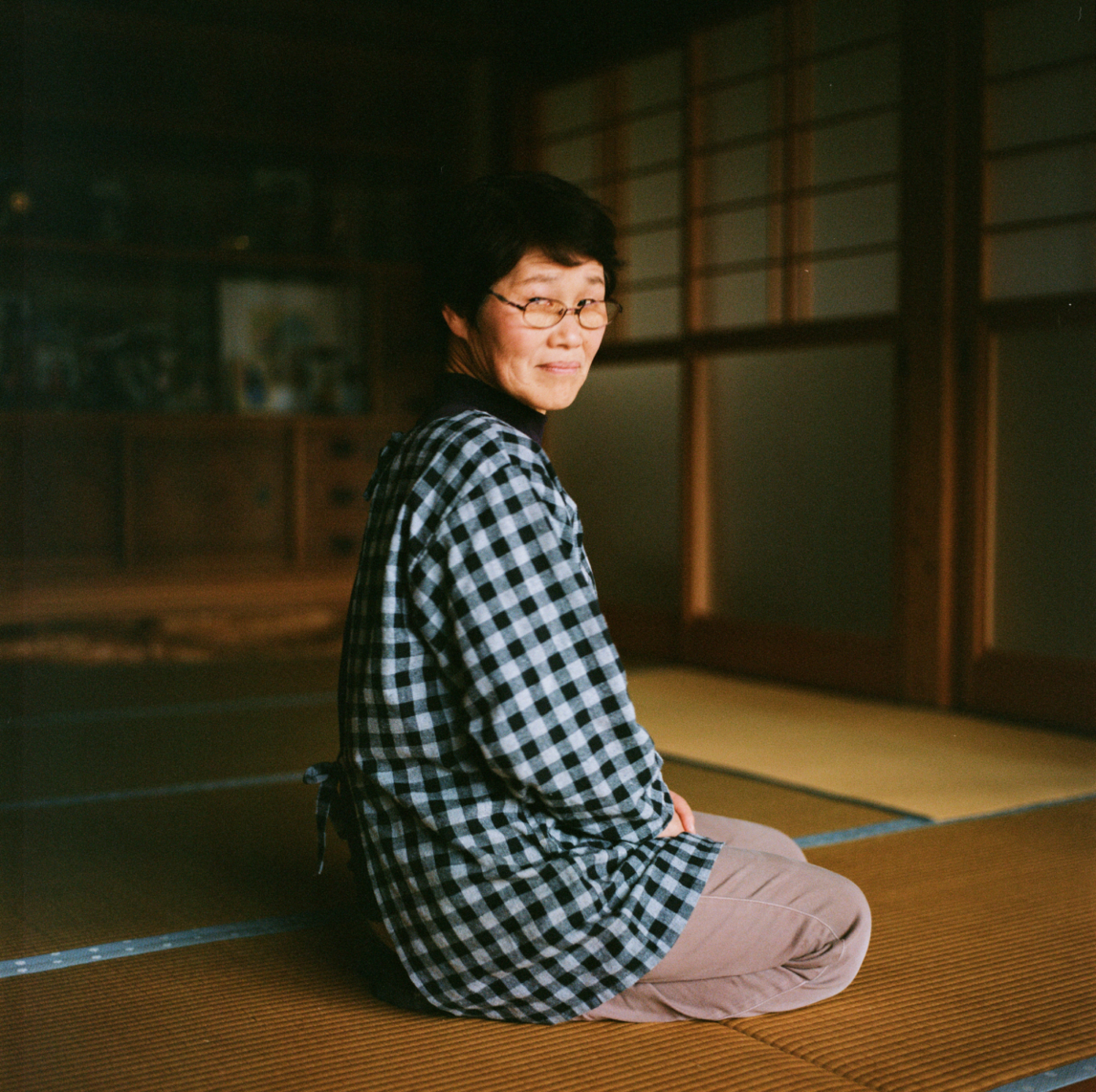
This old woman returned with her husband in April of 2015, with the city’s authorization. She and her husband, a carpenter, preferred to come back, even though they knew that none of their friends or neighbors would return. Amongst these friends and neighbours, many have had their houses demolished. She and her husband felt unwanted by the people of Iwaki when living there in three temporary houses. Her mother-in-law died two years after the disaster, in her temporary house, because of stress she says. Her children and grandchildren decided to stay permanently in Iwaki.
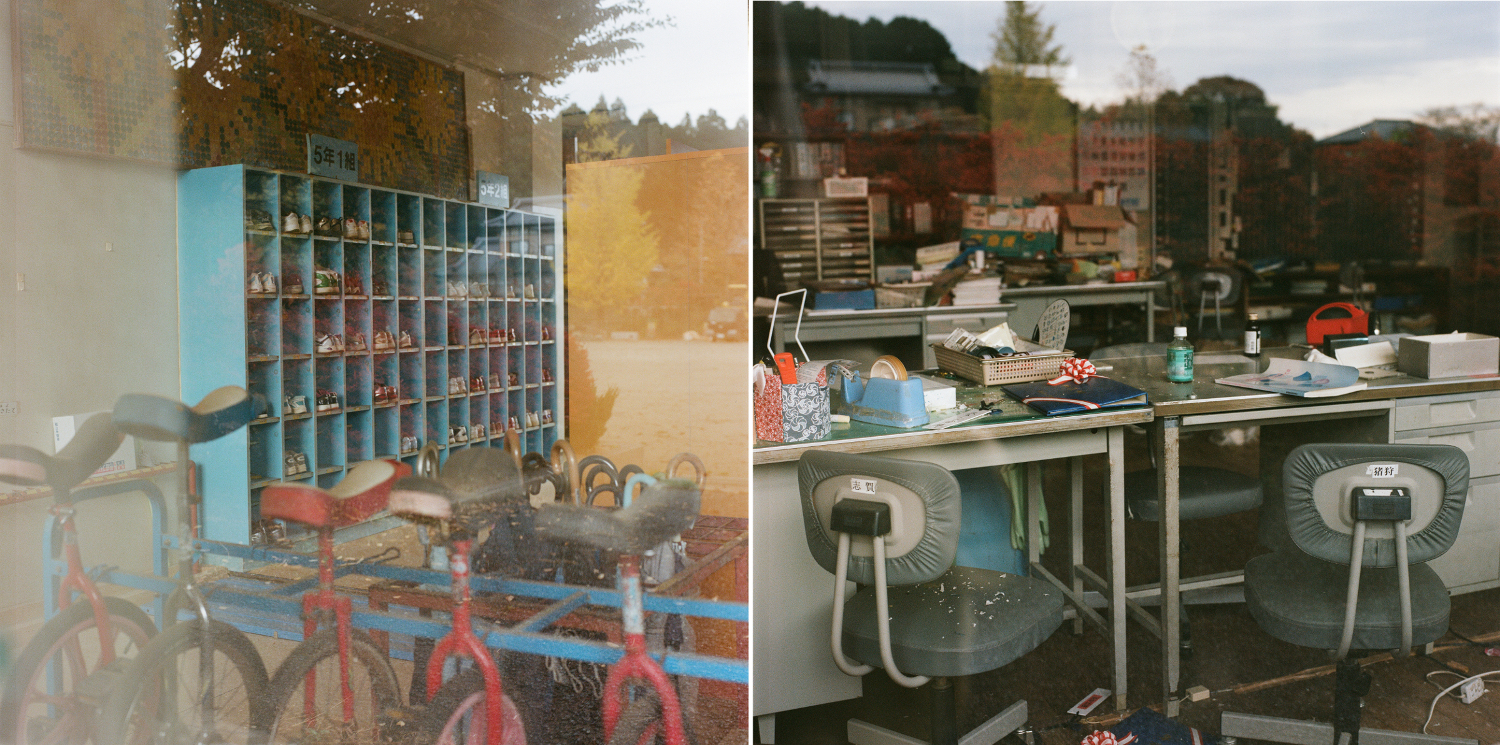
Naraha’s former primary school is closed for good. Evacuated since the earthquake, everything has remained as it was. To the left, sports shoes and children's school bags are still in their lockers.

This man returned to his house. He has a newsstand with his sister. Before the disaster, he would sell more than 800 newspapers a day, now, less than a hundred. His house sustained a lot of damage following the earthquake and he was forced to do renovations totaling around $100 000.
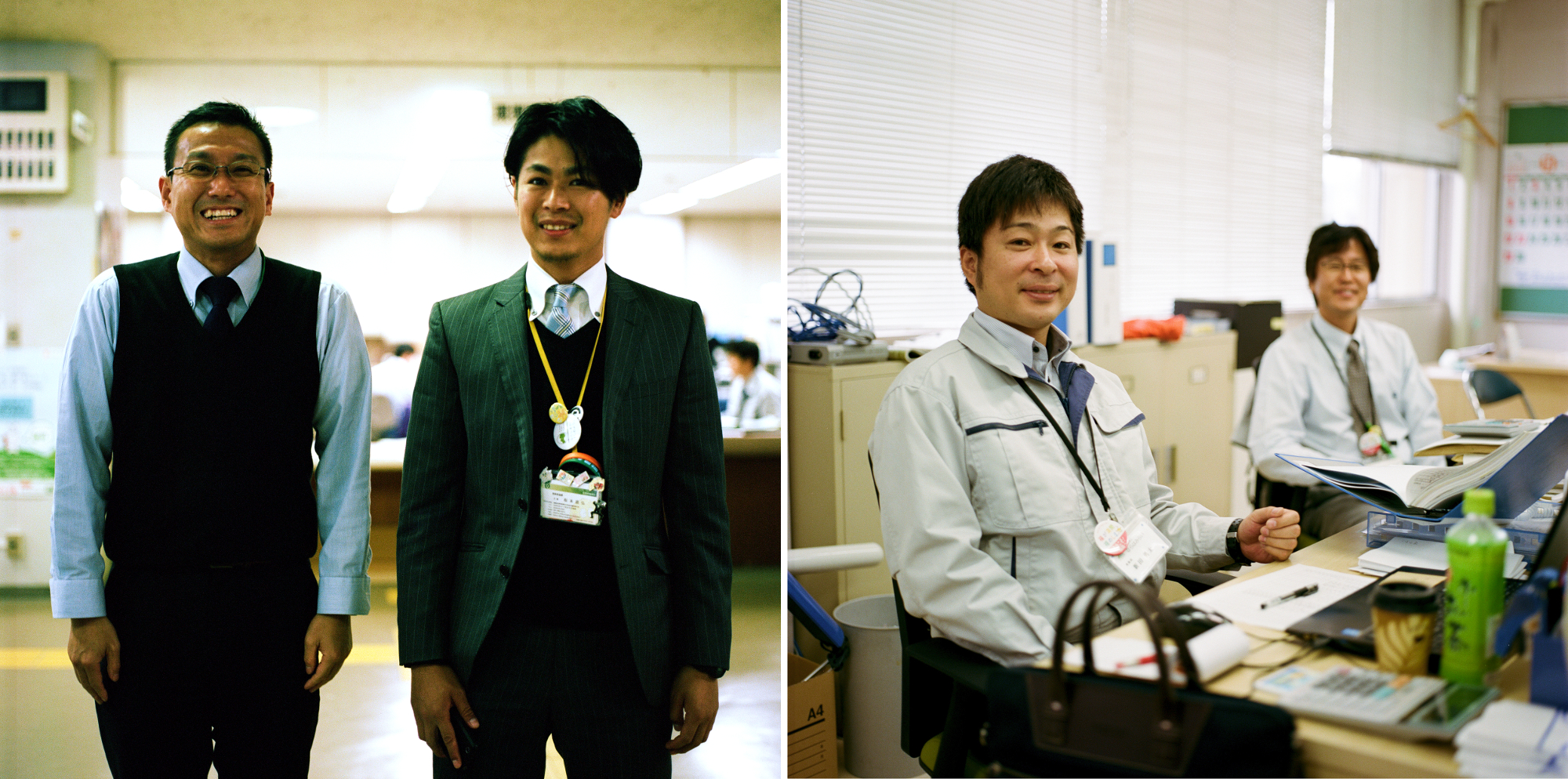
Left, these two people work in Naraha’s town hall. The one to the right, Masahiro Matsumoto, is a native of Naraha but his house was washed away by the tsunami. He doesn’t have the money to rebuild and anyway. Right, these two men work at the Naraha Mirai community center, mandated by the city to recreate social ties amongst the residents who have returned. They publish a neighbourhood magazine and organize social activities. Nitta, to the left, lives in Koriyama, the big city 100 kilometers northwest. A former resident of Naraha, he does not want to come back here because of his two young children.

This couple to the left had started to repair their old home, but, since it was so badly damaged, they finally decided to demolish and rebuild it. They tell me that they will come back with their children and grandchildren, as soon as the school reopens. The gentleman plans to reopen his clothing store on the ground floor. The man in the right photograph is their interior designer, also a resident of Naraha. He has also opened an art gallery next to the village’s only non-public restaurant.

The city lights few public lights at night. Thus much of the streets plunge into darkness. Some residents have confided in me that they get scared when the night falls. The police make egular rounds, light music indicating their presence which we often hear in the distance.
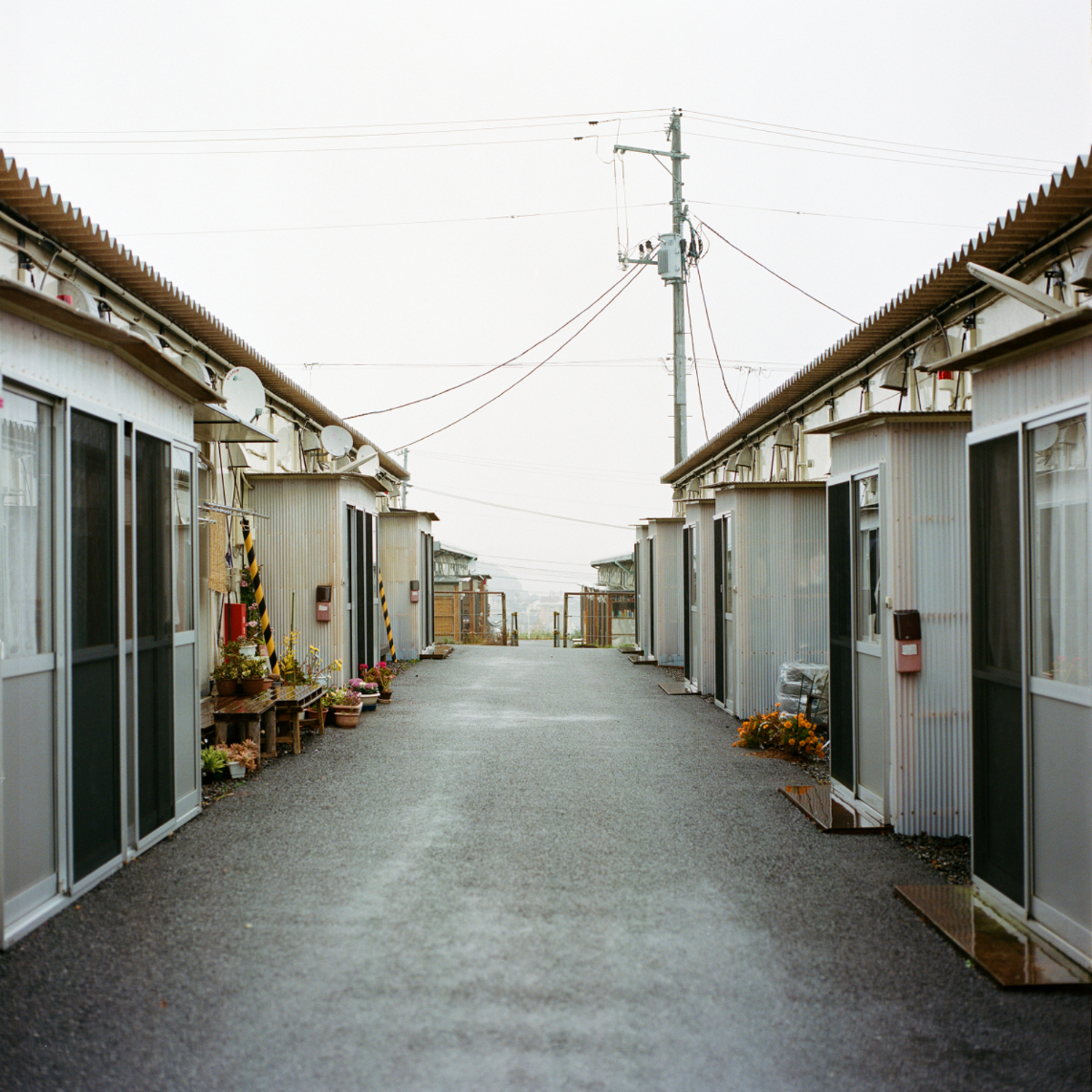
5967 refugees from Naraha still live in Iwaki, which represents approximately 80% of Naraha's official population. 42% of these refugees still live in one of the 13 temporary camps such as Kamiarakawa (the largest). The rest live in apartments. The Kamiarakawa camp, as with all the temporary camps that have been set up after the disaster in Japan, and particularly in Fukushima, consists of a row of regularly spaced prefabricated site bungalows. The living spaces are inadequate, and are often much smaller than the former dwellings of those who were relocated here.

This 14 year old teenager is one of 45 young people living in the camp. She and her parents will not return to Naraha.
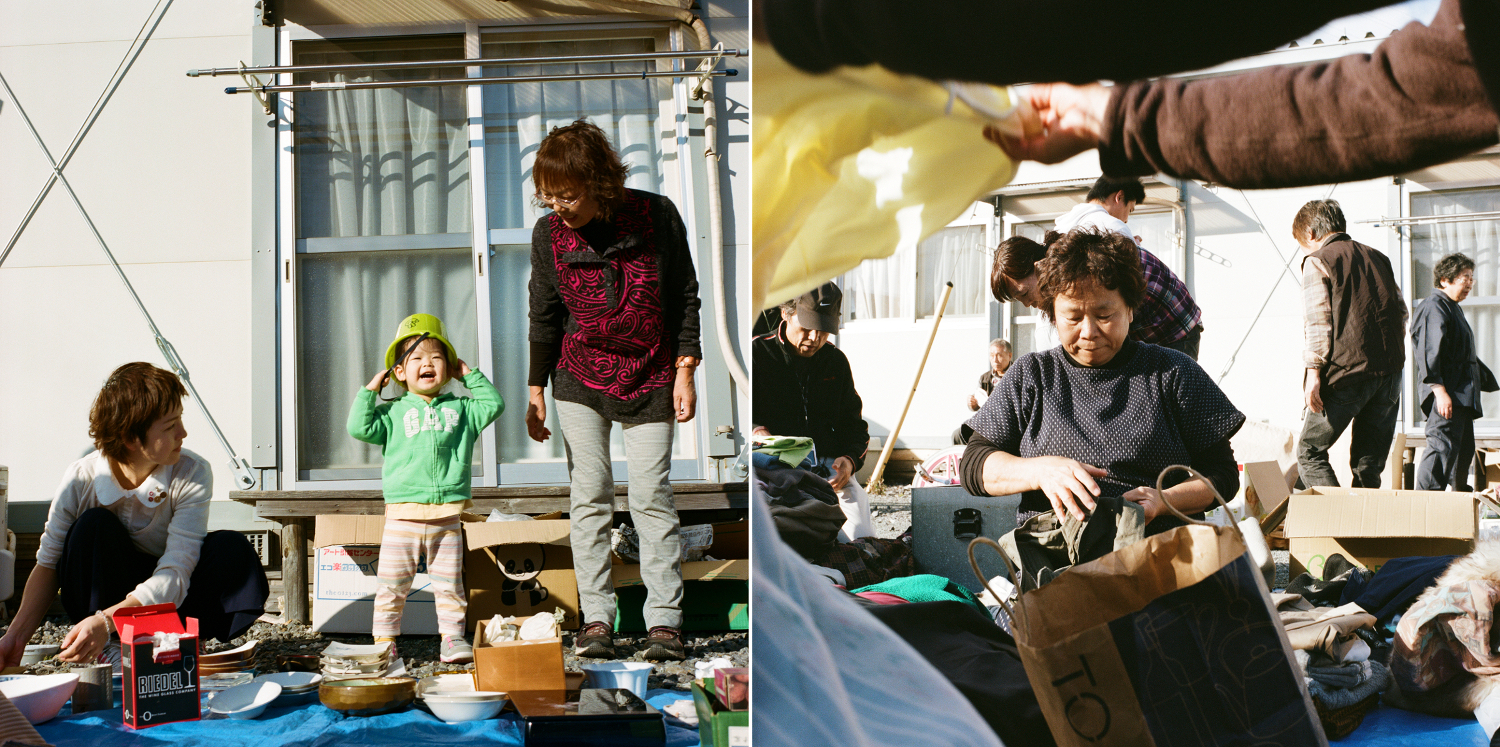
An association comes to distribute clothes and things to the camp. It is made in anticipation of winter. It is also an important social occasion.
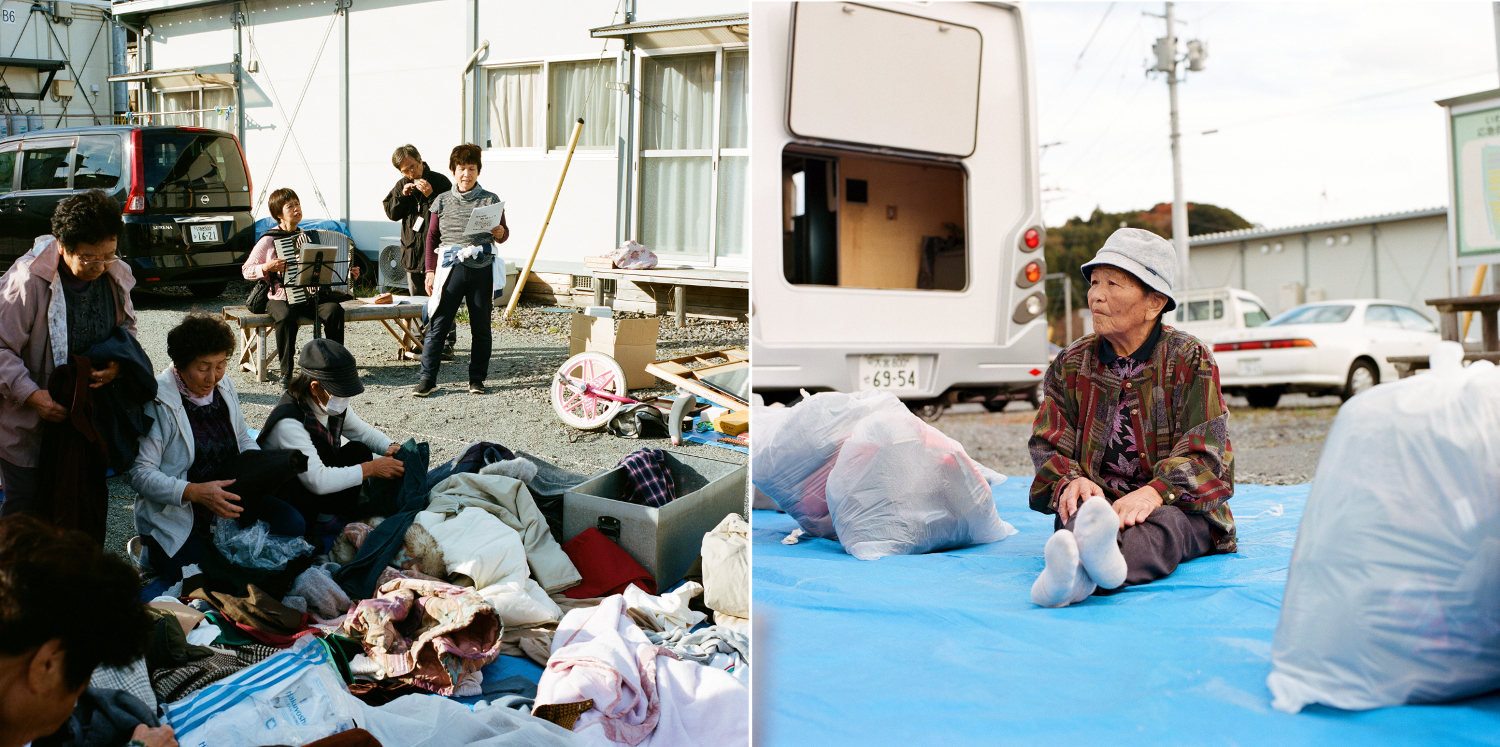
A small concert of music and song is given during the handout.
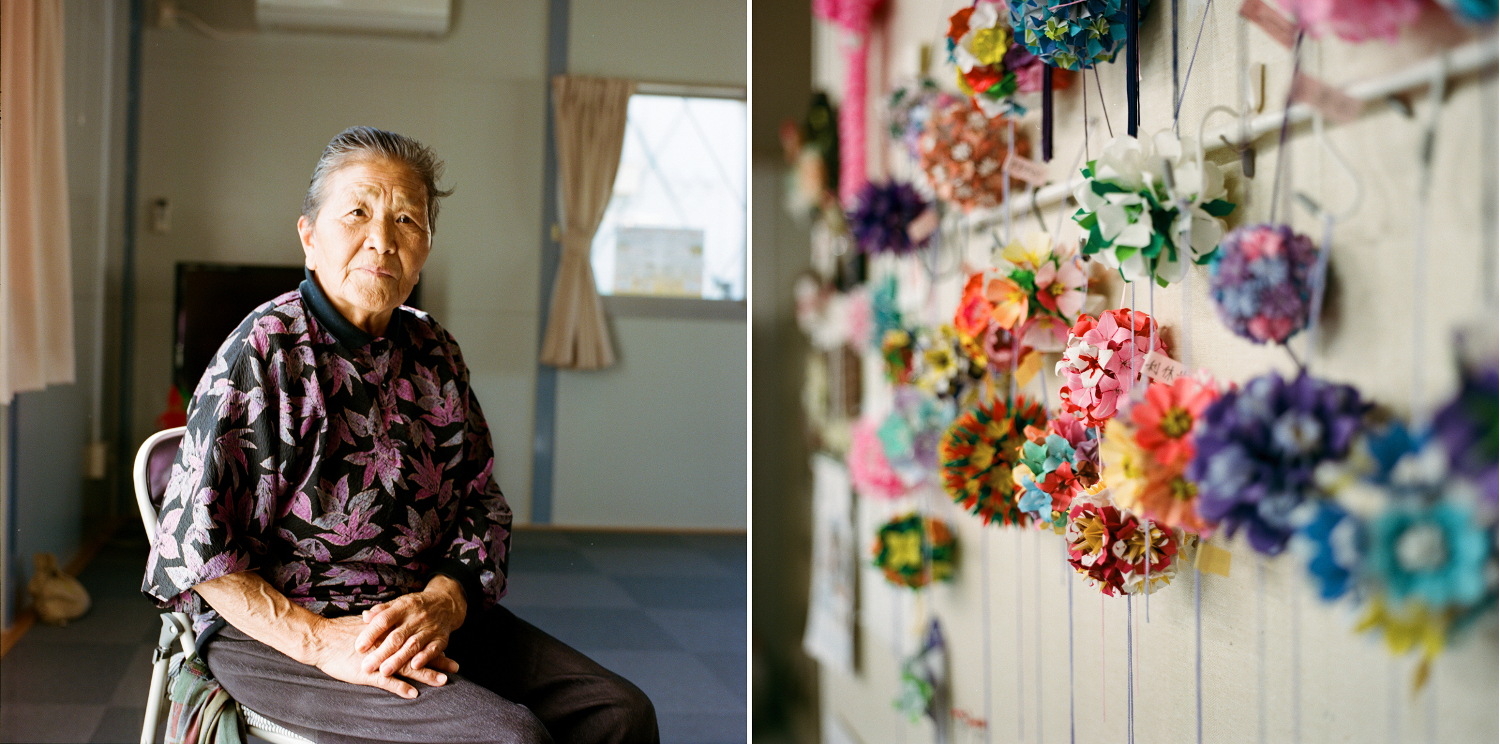
I meet this 88 year-old lady in one of the community halls; we chat for a while. Her son works at Fukushima Daichi. Recently in this community hall, to the right, kusudama (modular origami) were made.
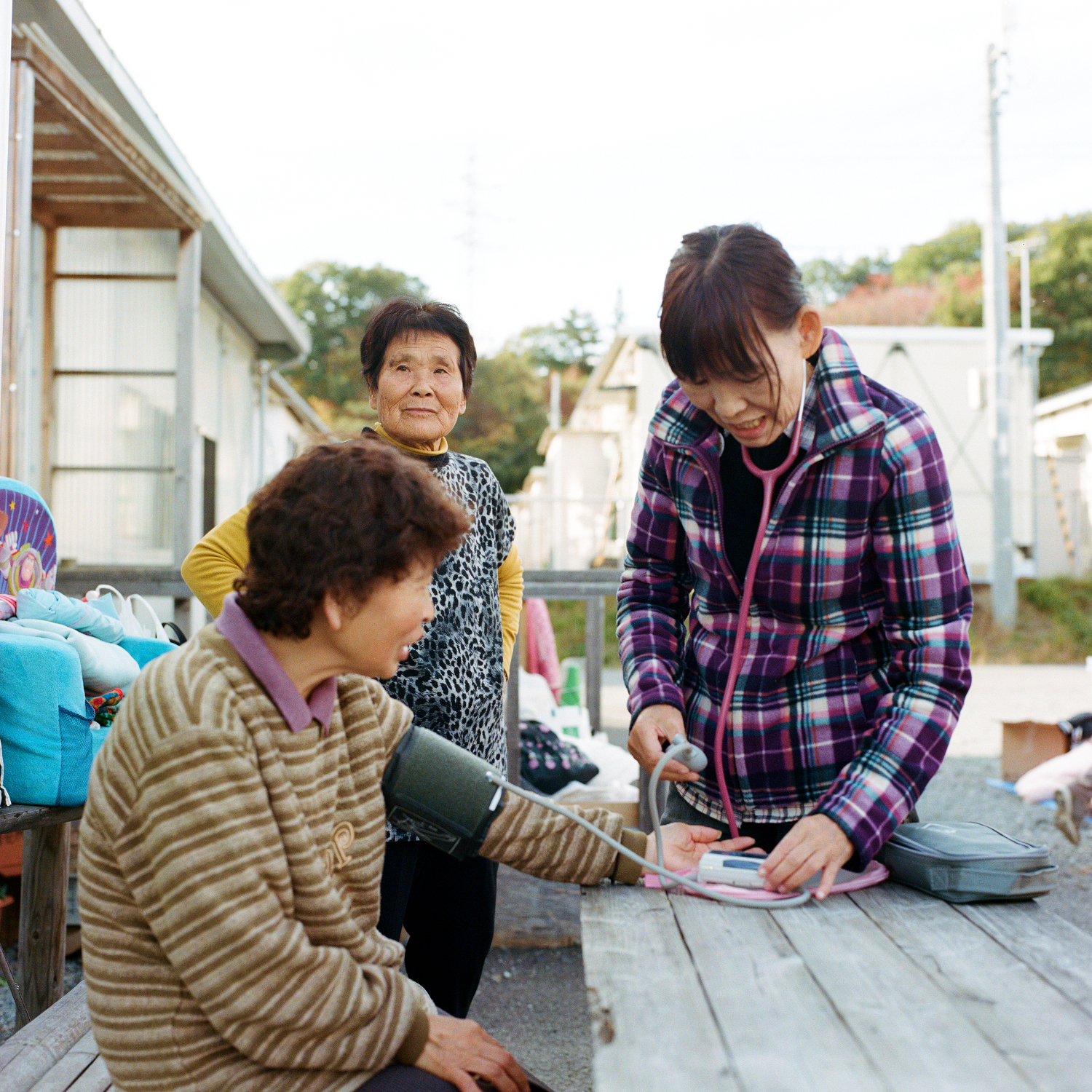
A volunteer nurse takes the opportunity to check up on some of the elderly people present.
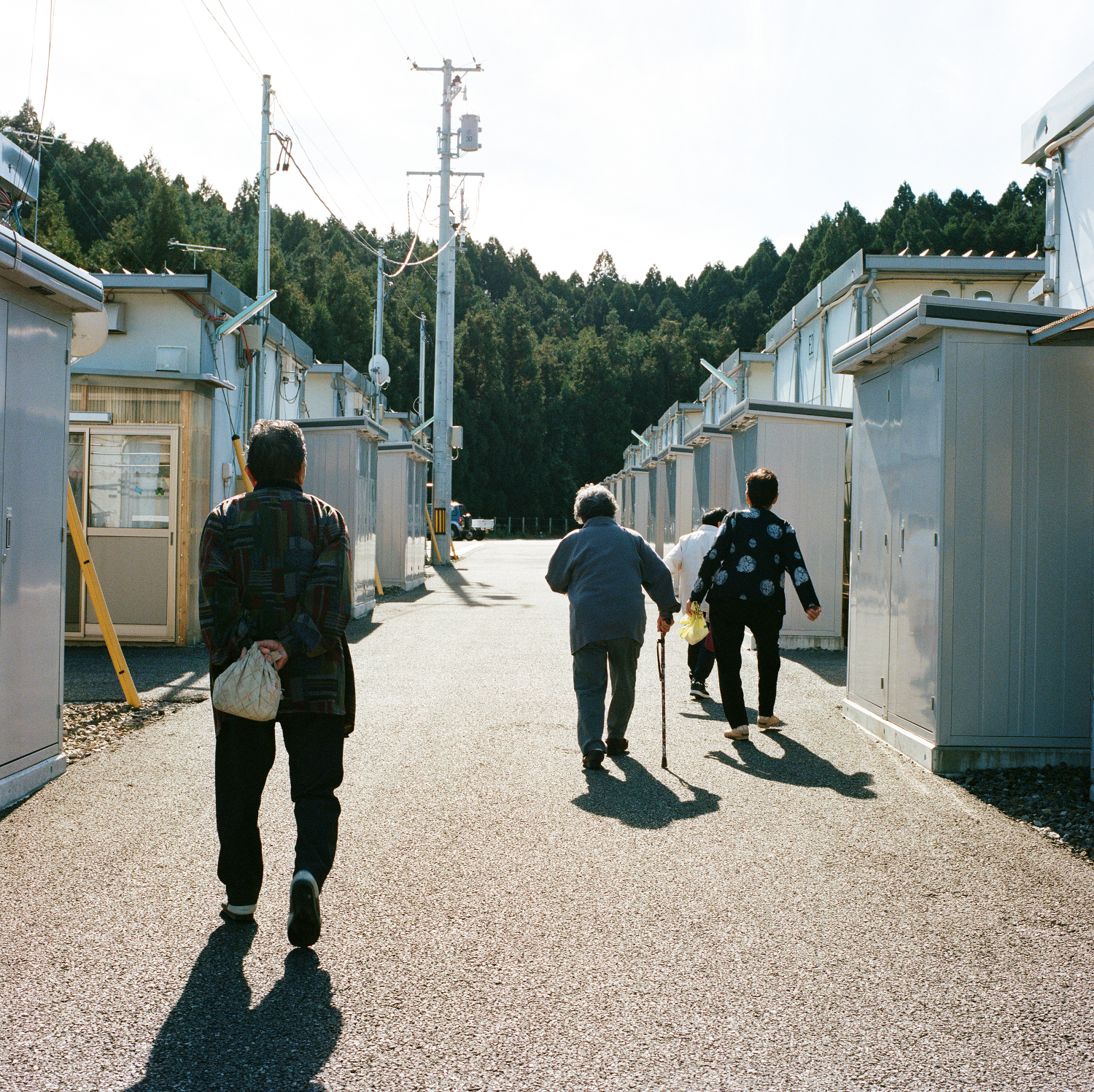
They then go home after having met at the community hall.























Further north to Naraha, the Joban train line used to run until Minamisoma; but as its route pass through a still too contaminated zone, the line presently ends quite abruptly in the bushes at the edge of town.
Kamakura Mori works at the Naraha Tatsuta Station. He comes from Iwaki but is very committed to the revival of Naraha. He proudly shows me the many flowers that he has planted in and around the station. Right, about twenty bicycles abandoned in the parking lot of the Tatsuta station are gradually surrounded by brambles. Like everywhere in Japan, these bikes have no padlocks as theft is rare.
Nature takes its course in many parts of the city. Persimmons, fruits for which Fukushima was very famous, have a substantial presence in the village. They cover the tree to the left.
This man is Japanese but was born in China in 1928. He returned to Japan with his family after the Second World War. He is presently preparing to return to Naraha in the coming weeks, with his spouse. They are now fixing their home, damaged by humidity over the last four years. Since the disaster, he has lived with his spouse in temporary housing. He had surgery due to lung cancer two years ago.
A Nissan Figaro (vintage car, build at 20000 ex. in the late 1980s) gathers dust for over four years and awaits the return of its owner.
Since April of 2015, Yukiko Takano has returned to work in her small coffee-truck. Her customers are mainly labourers for construction and demolition companies, companies with a strong presence in the city. Her mother still lives in temporary housing while waiting for her house to be repaired. Tanako often parks her truck in front of the two temporary restaurants set up by the city (in the back). A portion of the employees of these two restaurants are foreigners (Chinese) hired by the city.
This man is a city councillor in Naraha. Stored in front of his house are thousands of slightly radioactive sandbags, the fruit of decontamination operations. He tells me that the radioactivity is well monitored by the state and therefore, he is not at all worried.
This man works at the Fukushima Daini plant, a few kilometers north of Nahara, at the boundary of the current evacuation zone. The plant bore less of the brunt of the tsunami than the one at Fukushima Daichi, but nevertheless remains shut down. He wishes to go back to living in his own house, as do his wife and children. But they still have to discuss their actual return date. He tells me that the government came to decontaminate his house just by washing the walls and roof. The logs next to him are for his fireplace. He just repaired his bathroom and occasionally stays at his place on weekends.
This man was born in Naraha and he is among those who had requested permission to return to live at home in the summer of 2014. He told me that had I come a bit earlier to see him, he would have invited me to dinner to sample the fish he caught in the river below his house. He also keeps a garden, and his vegetables are monitored by the municipality. The government came to decontaminate his house, but he preferred to redo it, a second time, himself.
This old woman returned with her husband in April of 2015, with the city’s authorization. She and her husband, a carpenter, preferred to come back, even though they knew that none of their friends or neighbors would return. Amongst these friends and neighbours, many have had their houses demolished. She and her husband felt unwanted by the people of Iwaki when living there in three temporary houses. Her mother-in-law died two years after the disaster, in her temporary house, because of stress she says. Her children and grandchildren decided to stay permanently in Iwaki.
Naraha’s former primary school is closed for good. Evacuated since the earthquake, everything has remained as it was. To the left, sports shoes and children's school bags are still in their lockers.
This man returned to his house. He has a newsstand with his sister. Before the disaster, he would sell more than 800 newspapers a day, now, less than a hundred. His house sustained a lot of damage following the earthquake and he was forced to do renovations totaling around $100 000.
Left, these two people work in Naraha’s town hall. The one to the right, Masahiro Matsumoto, is a native of Naraha but his house was washed away by the tsunami. He doesn’t have the money to rebuild and anyway. Right, these two men work at the Naraha Mirai community center, mandated by the city to recreate social ties amongst the residents who have returned. They publish a neighbourhood magazine and organize social activities. Nitta, to the left, lives in Koriyama, the big city 100 kilometers northwest. A former resident of Naraha, he does not want to come back here because of his two young children.
This couple to the left had started to repair their old home, but, since it was so badly damaged, they finally decided to demolish and rebuild it. They tell me that they will come back with their children and grandchildren, as soon as the school reopens. The gentleman plans to reopen his clothing store on the ground floor. The man in the right photograph is their interior designer, also a resident of Naraha. He has also opened an art gallery next to the village’s only non-public restaurant.
The city lights few public lights at night. Thus much of the streets plunge into darkness. Some residents have confided in me that they get scared when the night falls. The police make egular rounds, light music indicating their presence which we often hear in the distance.
5967 refugees from Naraha still live in Iwaki, which represents approximately 80% of Naraha's official population. 42% of these refugees still live in one of the 13 temporary camps such as Kamiarakawa (the largest). The rest live in apartments. The Kamiarakawa camp, as with all the temporary camps that have been set up after the disaster in Japan, and particularly in Fukushima, consists of a row of regularly spaced prefabricated site bungalows. The living spaces are inadequate, and are often much smaller than the former dwellings of those who were relocated here.
This 14 year old teenager is one of 45 young people living in the camp. She and her parents will not return to Naraha.
An association comes to distribute clothes and things to the camp. It is made in anticipation of winter. It is also an important social occasion.
A small concert of music and song is given during the handout.
I meet this 88 year-old lady in one of the community halls; we chat for a while. Her son works at Fukushima Daichi. Recently in this community hall, to the right, kusudama (modular origami) were made.
A volunteer nurse takes the opportunity to check up on some of the elderly people present.
They then go home after having met at the community hall.